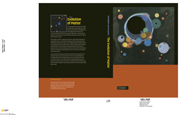Book contents
- Frontmatter
- Contents
- Introduction
- Part I The elements
- 1 Isotopes: weights and abundances
- 2 Introduction to the Universe: the baryonic matter
- 3 Element and isotope abundances: reference collection
- 4 Cosmological nucleosynthesis: production of H and He
- 5 Stellar nucleosynthesis: lower-mass stars and the s-process
- 6 Stellar nucleosynthesis: r- and associated processes
- 7 Timing of stellar nucleosynthesis
- 8 Chemical evolution of the Galaxy
- Part II Early solar system: nebula formation, evolution and lifetime
- Part III Accretion of the Earth
- Part IV Global evolution of the Earth
- References
- Glossary
- Abbreviations
- Meteorites, rocks and minerals
- Index
5 - Stellar nucleosynthesis: lower-mass stars and the s-process
Published online by Cambridge University Press: 04 September 2009
- Frontmatter
- Contents
- Introduction
- Part I The elements
- 1 Isotopes: weights and abundances
- 2 Introduction to the Universe: the baryonic matter
- 3 Element and isotope abundances: reference collection
- 4 Cosmological nucleosynthesis: production of H and He
- 5 Stellar nucleosynthesis: lower-mass stars and the s-process
- 6 Stellar nucleosynthesis: r- and associated processes
- 7 Timing of stellar nucleosynthesis
- 8 Chemical evolution of the Galaxy
- Part II Early solar system: nebula formation, evolution and lifetime
- Part III Accretion of the Earth
- Part IV Global evolution of the Earth
- References
- Glossary
- Abbreviations
- Meteorites, rocks and minerals
- Index
Summary
Introduction
From the discussion of the Big Bang nucleosynthesis in the previous chapter it follows that H and He, but not the heavier elements, could have been produced in this very early event. Since the classical publication by Burbidge et al. (1957) there has been no doubt that these heavier elements are produced in stellar nucleosynthesis, and the real problem is to discover how similar model stars and the nuclear processes in them are to reality.
After the collapse of a cold molecular cloud and the formation of a star, nuclear burning becomes the major source of energy in a star and also the process producing heavier elements from lighter ones. The production of heavy elements with A > 60 is controlled by neutron fluxes, which can be slow (Section 5.4) or rapid (Section 6.1), and also by several associated nuclear processes. The elements used by a star at its formation as well as newly produced elements are (partially) returned to the interstellar medium by stellar winds or explosions and mix with the matter already there. Another part of the stellar matter could be held in stellar remnants for a long time.
In this chapter we describe nucleosynthesis processes in stars up to ∼ 4 solar masses. These include H and He burning, which produces C, N and O in abundance and small amounts of the elements up to Si (Section 5.3), as well as the generation of elements heavier than Fe by the slow neutron capture s-process.
- Type
- Chapter
- Information
- The Evolution of MatterFrom the Big Bang to the Present Day, pp. 52 - 67Publisher: Cambridge University PressPrint publication year: 2008



